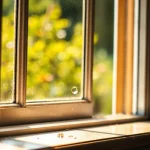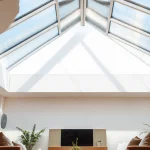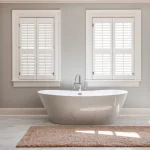Overview of Sustainable Insulation Innovations
Sustainable insulation is pivotal in transforming UK homes into eco-friendly havens, directly impacting energy efficiency and reducing the environmental footprint. Recent strides in insulation materials and technologies have redefined how households approach sustainability. Let’s delve into these innovations and their significant benefits.
Recent breakthroughs in insulation technology offer myriad options that not only preserve energy but also promote environmental sustainability. These advancements include the use of materials like recycled and natural fibers, which have proven to lower carbon emissions drastically. Insulation innovations such as these can lead to considerable reductions in household energy consumption, creating an eco-conscious environment.
In parallel : Expert guide to protecting historic uk sash windows from the elements: proven preservation techniques
The advantages extend beyond energy savings; sustainable insulation contributes positively to environmental impact by utilizing materials that are both renewable and biodegradable. This aligns with a growing emphasis on reducing housing sector emissions and promoting green living throughout the UK. In summary, these innovations in sustainable insulation materials and techniques not only enhance energy efficiency but also yield long-term environmental benefits.
Key Sustainable Insulation Materials
Transitioning to more eco-friendly options in home insulation requires understanding the variety of insulation materials now available. These materials improve not only the thermal performance but also the sustainability of our homes.
Also to see : Cozy up your uk living room: an in-depth guide to creating a warm winter retreat
Natural Fiber Insulation
Natural fiber insulation is an eco-friendly option gaining traction in the UK. Materials like sheep wool and hemp have excellent thermal performance and are renewable and biodegradable. Sheep wool naturally regulates moisture, making it ideal for maintaining consistent indoor climates. Hemp, on the other hand, is known for its durability and ability to sequester carbon, further enhancing its environmental benefits.
Recycled Materials
The use of recycled materials like glass wool and denim is a sustainable choice for insulation. Glass wool is made from recycled glass and offers excellent thermal performance and soundproofing capabilities. Denim insulation, made from recycled denim fabric, provides a safe, chemical-free option that adds to the movement towards sustainable building. Both materials highlight how waste can be transformed into valuable resources to enhance home insulation.
Aerogel and Other Advanced Materials
Advanced materials, such as aerogel, present cutting-edge solutions for insulation, renowned for their superior thermal performance. Aerogel is incredibly lightweight, with significant insulating properties, enabling it to be used in various applications from traditional building structures to aerospace. Despite its higher cost, the unmatched energy-saving potential of aerogel makes it a worthy consideration for eco-conscious homeowners looking to maximize insulation efficiency.
Innovative Techniques in Insulation Application
As energy costs soar and environmental consciousness grows, innovative insulation techniques become pivotal in modern construction and renovation. These techniques aim to maximize energy saving and improve a home’s overall efficiency.
Overview of Innovative Installation Techniques
Recent advancements in insulation encompass a range of techniques designed to enhance performance. One popular method is blown-in insulation, which involves filling wall cavities with insulating material for uniform coverage and minimizing gaps. This technique is widely applied in home renovation and ensures excellent coverage, particularly in hard-to-reach places.
Adaptive Insulation Solutions for Older Homes
Older homes pose unique challenges in terms of energy efficiency. Retrofitting insulation in such homes involves specialized solutions like spray foam insulation, which expands to fill spaces and achieves optimal sealing. These adaptive methods help maintain the character of old buildings while significantly boosting energy performance.
Use of Thermal Imaging for Effective Application
Thermal imaging technology supports effective insulation application by identifying areas of heat loss. This innovative technique ensures targeted improvements, allowing homeowners to address specific insulation needs with precision. By pinpointing compromises in insulation, thermal imaging helps optimize energy efficiency upgrades, transforming residences into energy-saving havens.
Compliance with UK Regulations and Standards
Navigating the landscape of UK building regulations is essential for ensuring that sustainable insulation methods meet compliance requirements. These standards are designed to enhance energy performance and maintain environmental sustainability.
Overview of Relevant Regulations
UK building regulations impact both the materials used and the methods of insulation installation. These regulations set minimum standards for energy efficiency, ensuring that homes reduce their carbon footprint through effective insulation. Homeowners need to align with these guidelines to contribute to broader environmental goals while improving home efficiency.
CE Marking and Certification
The CE marking is crucial for insulation materials as it signifies compliance with health, safety, and environmental protection standards within the UK and EU markets. For manufacturers, obtaining CE certification is a stamp of authenticity that assures consumers of the quality and compliance of their insulation materials with these exacting standards.
Energy Performance Certificates (EPC)
Energy Performance Certificates (EPCs) serve as a valuable tool for assessing a home’s energy efficiency. An EPC provides a detailed overview of a property’s current energy usage, along with recommendations for enhancing its energy performance. It indicates the effectiveness of existing insulation techniques, guiding homeowners on potential improvements. Understanding EPC ratings is essential in making informed decisions about insulation upgrades that promote sustainable living.
Major Suppliers and Stakeholders in the UK
In the realm of sustainable insulation, the UK market features a vibrant array of suppliers who prioritize eco-friendly building materials. Major players in this industry include Knauf Insulation, Isover, and Rockwool, each contributing significantly by offering advanced products that enhance thermal performance and sustainability. These leaders supply a wide range of insulation materials, such as glass wool, stone wool, and innovative foam variants, all focusing on reducing carbon footprints and improving building efficiency.
Collaborations between manufacturers and builders are central to promoting sustainable practices. These partnerships enable the development of tailored solutions that meet specific building needs while adhering to energy efficiency standards. By working in tandem, these stakeholders facilitate the integration of cutting-edge insulation technologies in both residential and commercial projects, ensuring that structures remain energy-efficient and environmentally responsible.
Industry organizations such as the UK Green Building Council and the Insulation Manufacturers Association play pivotal roles in advancing sustainable insulation solutions. These bodies advocate for best practices, set benchmarks for environmental impact, and foster innovation across the sector. Through initiatives aimed at educating both the industry and consumers, they drive awareness and adoption of sustainable materials and techniques. This collective effort underscores the importance of cohesive action in achieving national energy targets and environmental goals.
Case Studies and Practical Applications
Transitioning real-world renovation projects to incorporate sustainable insulation can showcase the transformation in energy use and environmental impact. In the UK, a range of successful home renovation examples highlights the practicality of eco-friendly options in achieving more energy-efficient homes.
Successful Home Renovation Examples
One notable renovation involved a Victorian home retrofitted with natural fiber insulation, such as sheep wool and hemp. By integrating these sustainable materials, not only did the thermal performance improve, but the carbon footprint of the home was also significantly reduced. These materials provided breathable, damp-resistant walls, crucial for maintaining structural integrity over time. Additionally, homes that incorporated recycled materials like denim insulation reaped the benefits of enhanced acoustic performance and safety due to the absence of harmful chemicals.
Commercial Projects with Sustainable Insulation
In the arena of commercial projects, a leading shopping centre in London utilized aerogel insulation. Known for its superior thermal efficiency, aerogel dramatically reduced heating costs while maintaining a comfortable indoor climate. Its lightweight properties allowed for easier installation without compromising on structural design. By leveraging aerogel’s distinct advantages, the project successfully balanced modern architectural needs with energy-saving objectives.
Lessons Learned from Case Studies
These case studies impart important lessons about the practicality of sustainable practices. Implementing diverse insulation strategies tailored to specific building requirements is crucial. Innovations in materials and techniques must harmonize with existing structures, ensuring optimal performance without compromising design ethos. Such projects underscore the critical role of thorough planning and execution, paving the way for widespread adoption in both residential and commercial areas. Through these real-world examples, the pathway towards a greener, more energy-efficient future becomes more tangible and achievable.










